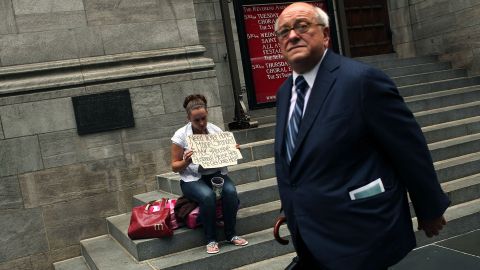The Land of Opportunity or Inequality? What the ‘Great Gatsby Curve’ Graph Shows

Inequality is one of the key issues of this year’s presidential election. It was the underlying issue behind the primary campaign of Bernie Sanders and has been mentioned often in the general election by both major candidates.
Indeed, income inequality in the United States is as high as it has been since the 1920s according to economist Thomas Piketty. The growth of inequality has been pronounced since the 1970s both in scale and in speed. An occurrence so remarkable it has been called The Great Divergence.
What effect might this massive inequality have on us? What does this mean for us other than having to hear politicians ramble on? Will we have to settle for a new economic order in which massive inequality is the norm? Will it affect our way of life?
According to labour economist Alan Krueger, income inequality can have negative effects on social mobility. Effects negative enough to turn Scandinavia into the land of opportunity; and to leave the United States behind most of Western Europe in terms of mobility at birth. He explains the effect in his ‘Great Gatsby Curve’ graph; named ironically for the rags to riches title character of The Great Gatsby and his ability to advance in an unequal society.
On the vertical axis is the social immobility of a child born in each country. The higher it is the more influence your parents income has on your earnings as an adult. The lower it is, the more likely you are to move out of the income bracket that you are born into. On the other axis is the Gini coefficient, a measure of inequality in a country. The higher it is, the more concentrated wealth and income are.
The graph shows that among many countries there is a relationship between high income inequality and low social mobility. The countries in the lower left with the lowest inequality also have the highest mobility. The countries at the top right with the highest inequality have the least social mobility. As inequality increases, the chances of making much more money than your parents did decreases.
What does this mean for the current discussion of inequality? It means that if nothing is done the tendency of income to concentrate is liable to become more pronounced, as is the belief of Alan Krueger. He adds that the effect has likely already slowed the growth of the US economy, and could demoralize workers. It also means that inequality is only half the story, social mobility – and the policies which make it possible – have to be considered as well in the discussion.
Sources:
Graph by BoogaLouie – Graph was creating using Excel. Source of data is Inequality from generation to generation the United States in comparison, CC BY-SA 3.0, https://commons.wikimedia.org/w/index.php?curid=20700242
“Income Inequality in the United States, 1913-1998″ with Thomas Piketty, Quarterly Journal of Economics, 118(1), 2003, 1-39(Longer updated version published in A.B. Atkinson and T. Piketty eds., Oxford University Press, 2007) (Tables and Figures Updated to 2015 in Excel format, June 2016)
Krueger, Alan B. “The Rise and Consequences of Inequality in the United States.” (2012): n. pag.Https://www.whitehouse.gov/sites/default/files/krueger_cap_speech_final_remarks.pdf. The White House. Web. 23 Aug. 2016.





